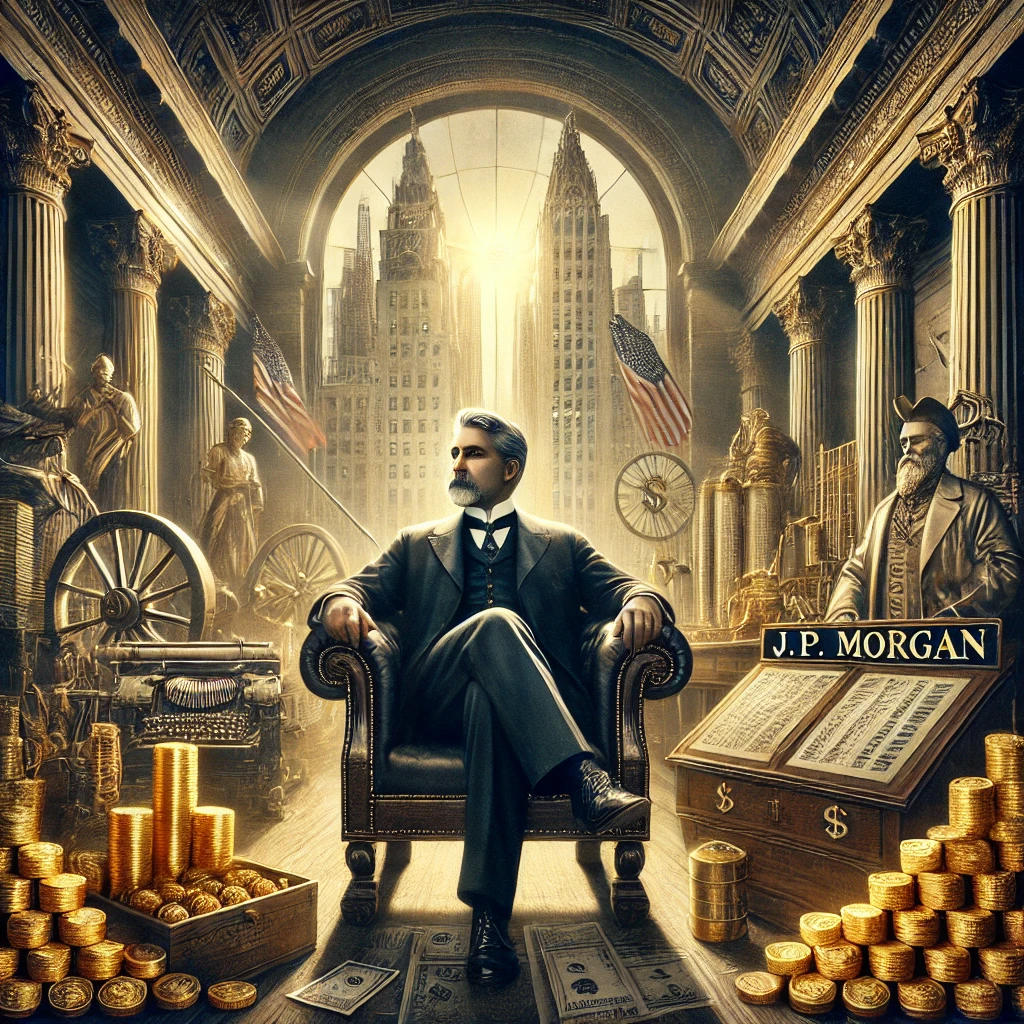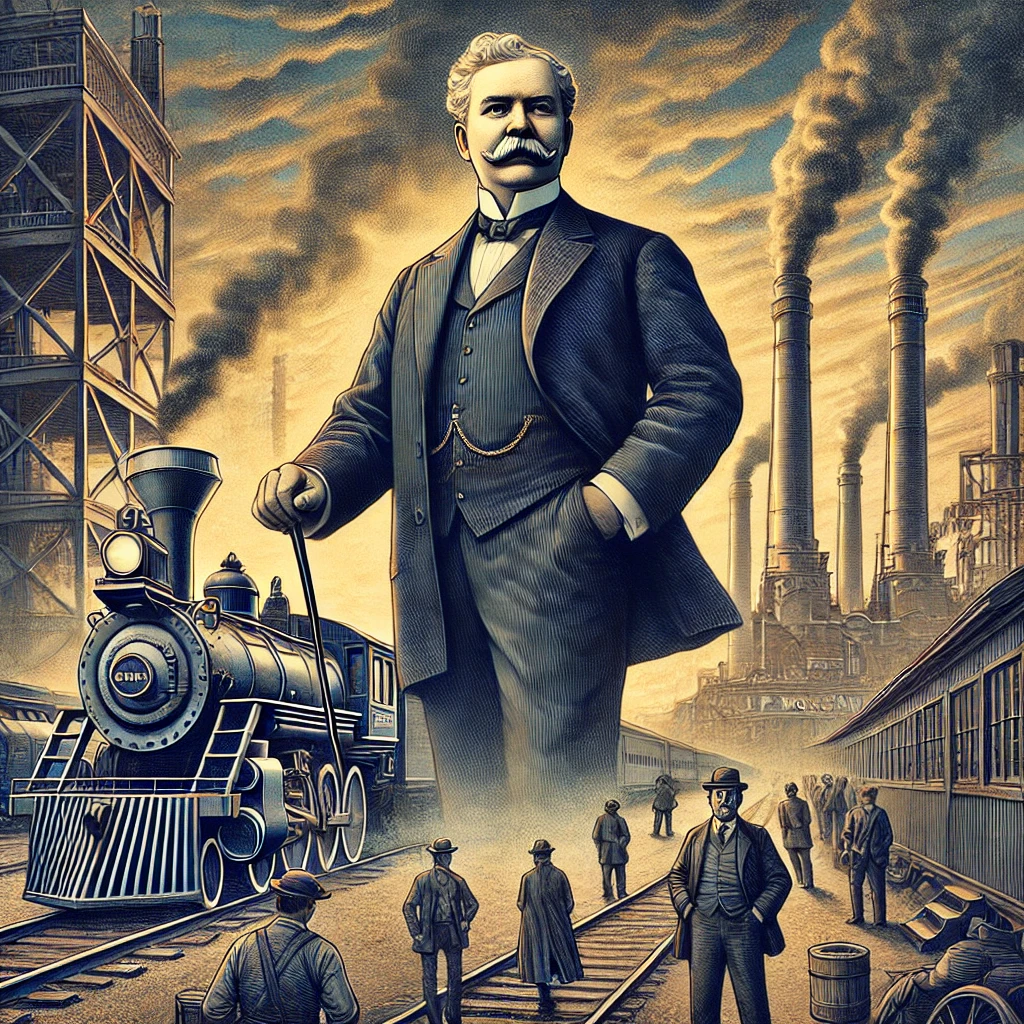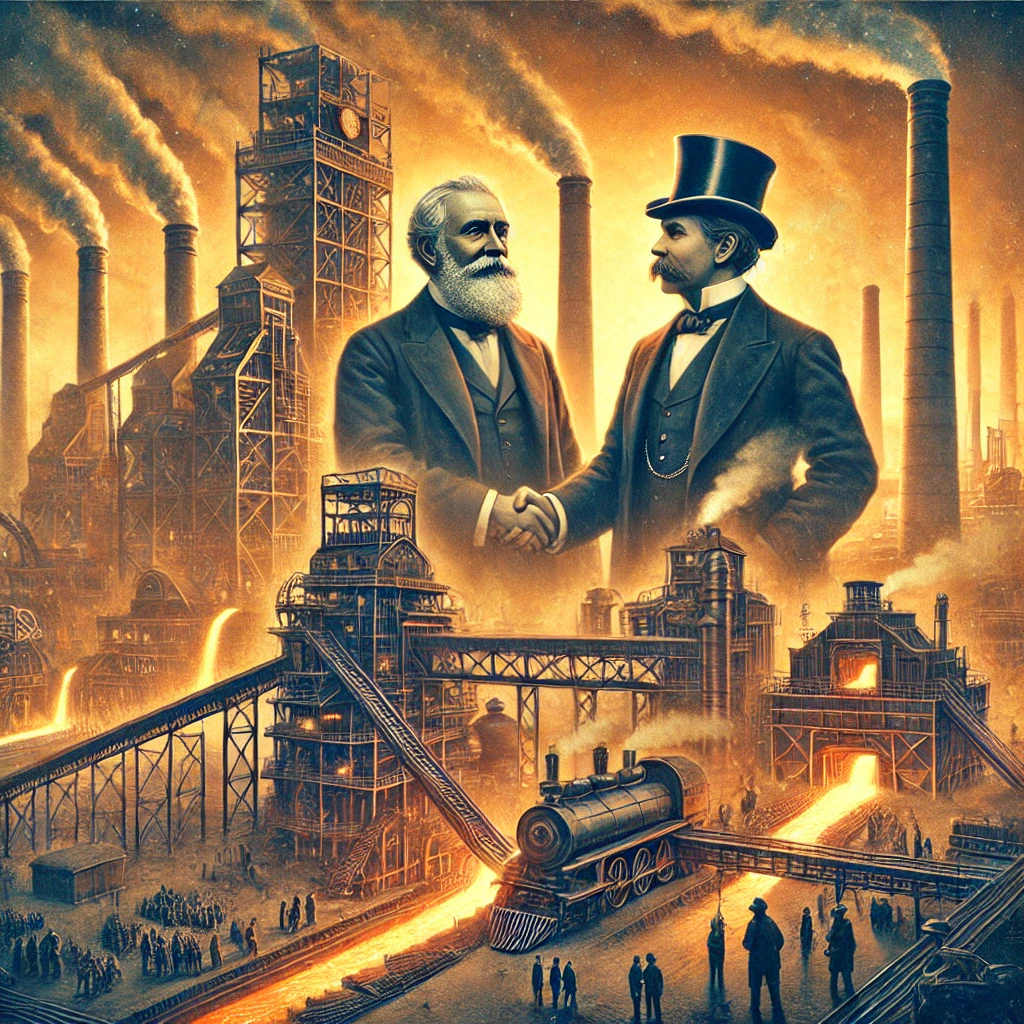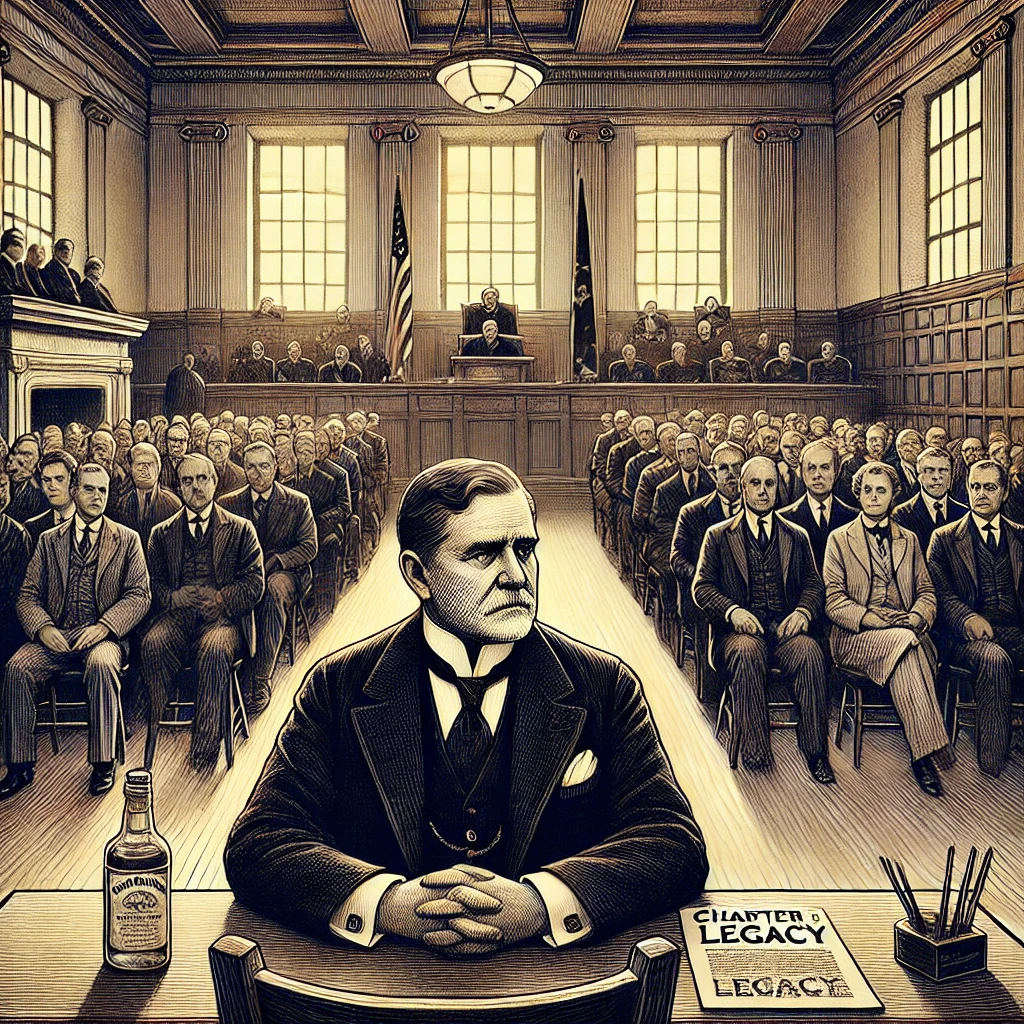Prologue: The Story of J.P. Morgan

Wealth, power, and influence—J.P. Morgan had it all. He owned the first billion-dollar company, dominated the country’s most profitable industries, and, on multiple occasions, the economy of the United States quite literally depended on his actions. He could save a company from collapse or doom it to bankruptcy with a simple word or the stroke of a pen. Hated by some and admired by others, there will never be another man quite like J.P. Morgan. This is his story.
Chapter 1: A Sickly Start

John Pierpont Morgan was born in Connecticut in 1837 into privileged circumstances. His father, Junius Spencer Morgan, was already a wealthy banker and ensured that John had the best education money could buy, intending for him to follow in his footsteps as a financier. However, despite being born into wealth, John’s childhood was bleak. He was a sickly child who regularly suffered from brutal coughing fits, migraines, seizures, and various diseases, such as scarlet fever. His medical conditions often kept him indoors while other kids played outside, leaving him to study or read financial statements. At one point, John became incapacitated by rheumatic fever, and his father’s solution was to send him to live alone on the Azores islands in the middle of the Atlantic Ocean. Believing the climate and salty air would aid his recovery, John’s father left him on the island for nearly a year. Once he was well enough, John resumed his education.
By 1857, John had studied in Boston, Switzerland, and Germany. At 19 years old, he was ready to enter the workforce. His father, now a junior partner at the London-based merchant banking firm George Peabody & Co., secured John a job on Wall Street at the banking firm managing Peabody’s American interests. John’s role included writing reports to his father’s firm detailing America’s financial and political developments, as the country was still an emerging market. However, his father feared that John’s rash and hot-tempered nature would hinder his success as a financier, believing he needed to learn restraint and responsibility.
In 1859, while visiting New Orleans, John made a bold and seemingly reckless gamble, using company money to purchase an entire shipment of Brazilian coffee that had no buyer. Though he sold it at a profit, the senior members of the banking house, including his father, disapproved of such risk-taking. By 1861, at 24, John left the security of an established firm to strike out on his own, founding a company that continued to act as an agent for his father’s bank in England.
That same year, John married his first love, Amelia Sturges, a frail young woman. For a brief period, John was the happiest he had ever been. Tragically, Amelia soon developed a persistent cough, later diagnosed as tuberculosis. Shortly after their wedding, John took her on an extended honeymoon to the Mediterranean, hoping the climate change would restore her health, much like his father had done for him years earlier. Sadly, Amelia died just four months after their wedding, leaving John a widower at 24. Devastated, he threw himself into his work, although it’s believed he never truly recovered from the loss.
During this personal crisis, the United States was facing the turmoil of the Civil War. The 1863 Conscription Act required John to enlist, but he avoided service by paying $300 for a substitute to take his place. However, this didn’t mean John stayed uninvolved. On the contrary, he profited significantly from the war. One of the most notable examples was his involvement in the financing of 5,000 surplus Hall carbine rifles. Purchased from the government at $3.50 each, the consortium he was part of made minor adjustments and resold them back to the government for $22 each—a more than 600% markup. While this deal was lucrative, it was seen as war profiteering and was highly unpopular with both the public and the government.
Despite this controversy, it was merely the beginning of the challenges John would face in his career.
Chapter 2: The Railroad Magnate

In 1871, John saw a golden opportunity to partner with one of the leading financiers in the country, Anthony Drexel. Together, they founded the Drexel, Morgan & Co. private merchant banking house, which was later renamed simply J.P. Morgan & Co. This firm, which John would manage for the rest of his life, served as the precursor to the modern banking titan known today as JPMorgan Chase. Early in his career, John primarily acted as a facilitator of deals, connecting wealthy investors and visionaries in exchange for a cut of the profits. However, as his fortune and reputation grew, he began financing many of these projects himself. His first major investment target was the American railroad system.
At the time, other major industries were dominated by single magnates, such as Carnegie in steel and Rockefeller in oil. In contrast, the railroad industry was highly fragmented, with many competing companies offering similar routes and often slashing prices to attract customers. While others saw fierce competition, John saw an opportunity. He believed the solution was consolidation—merging railroads rather than letting them compete. John understood that larger businesses benefited from economies of scale, so his goal was to unify small companies into powerful conglomerates. By consolidating railroads, he eliminated competition and allowed the newly unified companies to set their prices, owning entire regions of the rail network.
John invested heavily in railroads, taking over underfinanced companies, streamlining their management, and merging them into dominant players that could crush competitors—whom he would then acquire as well. This method became so effective it was named after him: “Morganization.” Unlike many investors of his time, John played a highly proactive role in managing the companies he acquired. He wasn’t content to sit back and collect profits; he craved control. He used his influence on boards of directors to shape company policies and frequently reshuffled leadership to suit his goals. He created monopolies and positioned himself at the head of the table. When railroads sought his help, he refused unless granted full control. This not only gave him the power he desired but also stabilized the industry, which attracted even more investment. European money flowed into U.S. railroads, further enriching John and cementing his reputation as a financial powerhouse.
John’s ambitions grew as he acquired more rail lines. In one major move, he purchased 250,000 shares of stock from William Vanderbilt in the prestigious New York Central Railroad. The following year, he orchestrated “the largest transaction in railroad bonds ever made in the United States,” underwriting $40 million in bonds to finance the Northern Pacific Railroad. Before long, John controlled one-third of all railroads in America. At a time when 60% of the U.S. stock market’s value came from railroad companies, John was no longer just a financier—he was shaping entire industries through reorganizations and mergers, which further expanded his wealth and influence.
John’s intimidating reputation was matched by his formidable appearance. He suffered from rosacea, a skin condition that inflamed and ruptured the blood vessels in his nose, giving it a red and disfigured look. He also had Rhodophyta, which enlarged his nose and covered it in pimples. Deeply self-conscious about his appearance, he often demanded that portraits retouch his nose to make it appear normal. Despite this, his commanding height and aggressive manner of speaking made him a fearsome presence.
In 1901, however, John encountered a formidable adversary in President Theodore Roosevelt. After consolidating the Northern Pacific Railroad with two others in the region, John formed a massive holding company called the Northern Securities Corporation. Under President William McKinley, John had enjoyed close ties to the administration and faced little opposition to his monopolistic practices. However, McKinley’s assassination and Roosevelt’s subsequent rise to power marked a turning point. Roosevelt, a staunch opponent of monopolies, ordered the Justice Department to sue Northern Securities for violating the Sherman Antitrust Act of 1890. Although John fought the case, the company was ultimately broken up. This marked the beginning of a tense relationship between the two men. When John heard Roosevelt was traveling to Africa, he quipped, “Good, I hope the first lion that meets him does his duty.”
For John, however, this legal setback was a minor hurdle. He was already planning something even more ambitious.
Chapter 3: The Man of Steel

In 1901, Carnegie Steel was at its peak. It dominated the steel industry and was one of the most valuable companies in the country. Despite generating $40 million a year, Andrew Carnegie was ready to retire and wanted to sell his company. But who could afford to buy it? That’s where John came in. He essentially told Carnegie to name his price, and Carnegie did—$480 million, a sum larger than any other business deal in history at the time. John agreed on the spot and later admitted he would have paid $100 million more.
John completed this landmark purchase in 1901, but it was just the beginning of his ambitious plan. He merged Carnegie Steel with the Federal Steel Company and several other businesses to form U.S. Steel, the world’s first billion-dollar corporation, with a market capitalization of $1.4 billion. To put this in perspective, all manufacturing in the country at the time was valued at a combined $9 billion. This deal gave John control over roughly two-thirds of American steel production. With steel and railroads—the two largest industries of the era—under his control, John seemed to have conquered both.
But he didn’t stop there. John helped finance Thomas Edison’s early experiments with electricity, and played a crucial role in merging Edison Electric with its competitors to create General Electric. He was also instrumental in the formation of what would later become AT&T. His talent for combining companies into unstoppable giants was unmatched. However, a crisis was looming.
In 1893, the United States faced a depression unlike anything it had seen before. Decades of unchecked growth and speculative investments led to a bubble that burst, plunging the economy into chaos. Stocks lost nearly half their value, thousands of businesses failed, hundreds of banks went bankrupt, and unemployment soared. Foreign investors, scared by the turmoil, cashed in their American bonds for gold, depleting U.S. reserves. Since the dollar was tied to the gold standard at the time, confidence in paper money relied on its convertibility to gold. By 1895, U.S. gold reserves had dwindled to just $9 million, far below the $100 million minimum typically maintained to back the dollar. The government was on the brink of default, sparking widespread panic and further withdrawals.
Without a central bank to step in, the situation was dire. President Cleveland recognized that America stood at a critical crossroads. Selling more bonds to the public wouldn’t provide the immediate relief needed. John proposed a bold solution: form a private syndicate of top bankers and foreign investors to replenish America’s gold reserves. His syndicate purchased $65 million in 30-year gold bonds, backed by 3.5 million ounces of gold. Thanks to a Civil War-era statute, Cleveland could approve the deal without waiting for Congress. Once the agreement was signed, John acted swiftly, and within 22 minutes, his team in New York had sold all the bonds.
John’s decisive actions immediately calmed financial markets, restored confidence in the economy, and averted a national default. While his intervention saved the day, it also raised concerns about the immense influence of one man over the U.S. economy. Critics questioned whether his motives were patriotic or opportunistic. In the next election, the relationship between big banks and the government became a contentious issue. However, John and his banking peers heavily funded the Republican nominee, who won the election, ensuring that John maintained his close ties to the government.
John’s role as a financial stabilizer wasn’t a once-occurrence. In 1907, the country faced another financial crisis. Several banks teetered on the edge of bankruptcy, leading to widespread panic as people rushed to withdraw their savings. The situation grew so dire that bank tellers were instructed to count money more slowly to delay withdrawals. With the potential for catastrophic collapse looming, President Roosevelt—despite his differences with John—agreed to collaborate with him to rescue the economy.
John gathered the nation’s top financiers in his Madison Avenue library and presented his plan: the larger banks would inject capital into smaller, struggling institutions to prevent widespread bank failures. He locked the doors until everyone agreed to his terms. By morning, a resolution was reached. With Roosevelt’s approval, the U.S. Treasury contributed $25 million to further stabilize the situation. Remarkably, John, then 70 years old and suffering from a terrible cold, orchestrated the entire rescue while frequently coughing and sneezing.
John’s plan succeeded. The influx of capital restored public confidence in the banking system and prevented another economic disaster. Yet, while he was briefly hailed as a hero, the reliance on one man to stabilize the economy became a growing concern. It was clear that a more permanent solution was needed to reduce dependence on any single individual.
Chapter 5: Legacy

John was facing increased scrutiny. The age of the robber baron, when businessmen could operate unchecked and wield immense power, was coming to an end. The American public was growing increasingly wary of a handful of individuals having such significant influence over the economy. John was summoned to testify before the Pujo Committee, which sought to investigate the true reach of Wall Street’s “money trust” and its role in shaping the American economy.
During the Pujo Committee hearings, John became the face of Wall Street power. Despite his financial success, his mental state was deteriorating. He suffered multiple nervous breakdowns and struggled to cope with the public’s increasingly negative portrayal of him in the media. Ironically, he was scheduled to board the Titanic for its maiden voyage but withdrew at the last moment due to health issues.
The Pujo Committee’s investigation paved the way for the establishment of the Federal Reserve. It became clear that the nation could no longer rely on a handful of ultra-wealthy individuals to step in during economic crises. However, John would never witness the repercussions of this investigation. On March 31, 1913, at the age of 75, the financier died while vacationing in Rome.
After his death, John’s son took over the business and continued its expansion. Even today, there are concerns about the bank’s power. Over the years, it has undergone countless acquisitions and mergers, something John himself would have likely admired. Notable mergers include those with Bank One, Bear Stearns, and, most significantly, the 2000 merger with Chase Bank to form JPMorgan Chase. With an estimated $3 trillion in assets and 200 years of consolidation in the banking industry, JPMorgan Chase is now the largest bank in the world by market capitalization.
While opinions on John Pierpont Morgan remain divided, there is no doubt that his legacy endures. Personally, though, when it comes to the era of industrialists, my favorite story is that of Cornelius Vanderbilt. Honestly, there was nobody quite like him, and if you don’t know his story yet, you’ve got to check it out. Cheers!
